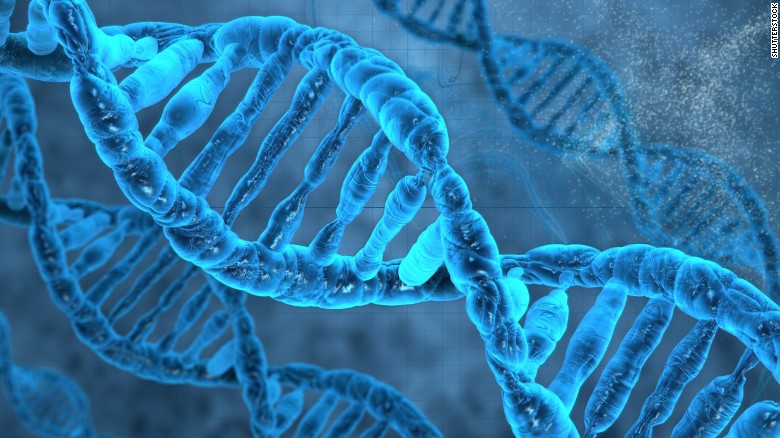Improving crops, stopping genetic diseases and possibly transforming entire species. Is the DNA-editing technology CRISPR-Cas9 about to revolutionize our societies and the world as we know it? Conversely, will the genomic engineering power of the technology be used to serve less noble causes such as creating designer babies? For the moment, it remains unclear what the future holds for the technology celebrated as the most versatile genetic modification tool ever invented in the history of molecular biology. (Plumer et al., 2018)
Clustered Regularly Interspaced Short Palindromic Repeat, better known as CRISPR, refers to the organization of short, repeated DNA sequences commonly found in genomes of bacteria and other microorganisms. The creation of the gene editing technology, CRISPR-Cas9, drew its inspiration from the defense mechanisms of these simple life forms. In case of an attack from a virus, bacteria defend themselves by cutting up the DNA of the invading virus and adding it as spacers to their CRISPR sequence. The CRISPR sequence is then copied into the RNA that serves as a “genetic memory” of past viral invasions and guides the bacteria to destroy viruses with DNA matching the CRISPR RNA sequences. This aids in protecting the bacteria from future attacks by the same virus. In order to turn the defense mechanism into a gene-editing tool, the CRISPR RNA is replaced by a modified RNA guide. The RNA guides the CAS9 enzyme that previously dealt with slicing up virus DNA to scan the genome of the cell and cut the DNA that matches the RNA. DNA sequences can then be adjusted or inserted into the cell to fix the damage caused by the enzyme. In other words, scientists can edit genes of humans and other species as they see fit. (Molteni, 2018) (Plumer et al., 2018)
CRISPR thus acts as a double-edged sword, on one hand causing disruption in the healthcare industry through affordable fast and easy gene editing while on the other raising a number of bioethical issues (Mayer, 2014). Where should the line be drawn for editing the genome of human embryos? The technology promises huge positive societal impact in the form of treatment of deadly genetic diseases. On the flip-side, its almost limitless applications allow for the manipulation of more controversial elements of human existence such as intelligence, beauty and life expectancy (The Medical Futurist, 2016). Manipulating the human genome thus suggests a plethora of possible scenarios for the future of our societies, ranging from a world with gene-edited soldiers to an earth populated by superhumans (The Medical Futurist, 2016). The question that remains is to what lengths are we willing to go to improve human life?
Mayer, K. (2014). CRISPR—Fast, Easy … and Increasingly Accurate | GEN. [online] GEN- Genetic Engineering & Biotechnology News. Available at: https://www.genengnews.com/gen-exclusives/crisprfast-easy-and-increasingly-accurate/77900114 [Accessed 5 Oct. 2018].
The Medical Futurist. (2016). What Could CRISPR Do Tomorrow? – The Medical Futurist. [online] Available at: https://medicalfuturist.com/what-could-crisprcas9-do-tomorrow [Accessed 7 Oct. 2018].
Molteni, M. (2018). Everything You Need To Know About Crispr Gene Editing. [online] WIRED. Available at: https://www.wired.com/story/wired-guide-to-crispr/ [Accessed 4 Oct. 2018].
Plumer, B., Barclay, E., Belluz, J. and Irfan, U. (2018). A simple guide to CRISPR, one of the biggest science stories of the decade. [online] Vox. Available at: https://www.vox.com/2018/7/23/17594864/crispr-cas9-gene-editing [Accessed 9 Oct. 2018].


Hey Kati, what an interesting topic! It is true that right now CRISPR CAS9 is quite ethically ambigious. How far indeed are we willing to go to improve human life?
Of course CRISPR can be used to eradicate genetic mutations that would result in lifelong disability. For most of us this sounds like heaven on earth, but something to consider that might be hard to understand for some us, is that a lot of people with disabilities take pride in those exact disabilities. People who are deaf from birth for example often choose not to get a cochlear implant which would allow them to hear, because they take pride in their deafness. They have built a tight knit community with its own language. So while for most of us this seems like the solution we’ve all been waiting for, some disabled people see the use of CRISPR to eradicate their disabilities as an insult to them and their communities, as we are essentially telling them by wanting to “fix” them that there is something “wrong” with them (Garland-Thomson, 2017).
Besides this, there is of course the issue you yourself raised, about the usage of CRISPR for the wrong means. Designer babies is the hot topic, especially now that CRISPR seems more within reach than ever. But we have to ask ourselves and most of all parents (to be): “If you could design a baby, are you not eliminating all that makes us unique and special as human beings? Are you not eliminating the element of surprise and discovery that comes with raising a child?”
Lastly, recently there has been evidence that CRISPR DNA editing can have some unfortunate side effects. A recent study shows that CRISPR could be causing extensive mutations and genetic damage, that researchers say would not be detected by existing DNA tests (Dockrill, 2018).
So maybe for now its best to not tamper with natural selection and evolution…
https://www.nytimes.com/2017/10/26/opinion/my-orphan-disease-has-given-me-a-new-family.html
https://www.sciencealert.com/crispr-editing-causes-frequent-extensive-mutations-genetic-damage-target-deletion-site